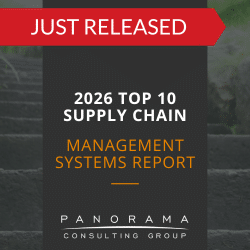There are many people whose influence could determine the success of your digital transformation. Understanding their concerns and needs regarding this project is key to successful digital adoption.
It all starts with organizational change management (OCM). This is a structured process and set of tools for managing the human aspects of organizational change.
Today, we’re discussing just one component of OCM: a change management stakeholder analysis. But what is the role of stakeholder analysis in change management? Explore the importance of the role and the use of stakeholder analysis in organizational change management with strategy examples.
Change Management Case Study
The client recognized their need for more comprehensive change management, so they asked us to fill in the gaps. We developed a robust communication plan to supplement the vendor’s communication approach.
How is a Stakeholder Analysis Used in Organizational Change Management?
Maybe you’ve decided to create a new digital business model, or maybe you want to consolidate your data into an ERP solution. In either case, there will be many internal stakeholders that want their voices heard.
To cut through the noise, many project management teams turn to what is known as a stakeholder analysis. This is a matrix that helps you identify stakeholder needs and determine how to engage stakeholders throughout the project.
As you create this matrix, you should assess stakeholder influence as well as their level of interest in being a change advocate. From there, you can determine how to approach each stakeholder.
These stakeholders might include:
- C-level executives
- Project sponsors
- Subject matter experts
- Process owners
- Business unit leaders
- Individual end-users, including front line employees
Each of these stakeholder groups has individuals with unique skill sets, perspectives, and pain points. Applying a generic approach to every stakeholder can be a recipe for disaster. It’s important to consider how each individual and group might respond to the change and how you should tailor your communication.
Similarly, understanding stakeholders’ needs can inform your resistance management strategy. This helps you identify potential resistance early and devise proactive measures to address it.
Key Cultural and Organizational Considerations in a Change Management Stakeholder Analysis
The context in which change occurs can significantly influence your stakeholder engagement strategies. Recognizing and respecting the cultural norms, values, and communication styles within your organization can foster more positive interactions.
For example, in hierarchical organizations, you may need to use formal channels and protocols to engage senior management. Understanding these dynamics is crucial for tailoring your approach to fit your organization.
4 Reasons to Conduct a Stakeholder Analysis in Change Management
1. To Understand Stakeholder Needs and Perspectives
Some stakeholders, like executives, have direct control over whether your project gets the budget it needs.
The use of stakeholder analysis in organizational change management can help you to understand the priorities of these decision makers. What are their motivations and objectives?
Beyond executives, there are other individuals, such as process owners and end-users, who will influence different stages of the project. Do you know what changes they would like to see?
Ultimately, you want to balance stakeholder needs with the overall business needs. Both should guide your technology purchases and the processes you improve.
In our Software Expert Witness practice, we’ve found that projects focused on IT needs rather than business needs end up hurting the business rather than helping it.
2. To Detect Change Resistance
With any organizational change, you will experience change resistance. Even if the change involves a popular ERP system that will solve some major pain points, your employees will want to cling to the familiar.
A stakeholder assessment allows you to identify attitudes and opinions that may signal some level of resistance.
Once you can clearly see this resistance and have identified the biggest sources of resistance, you can determine the steps necessary to increase buy-in.
3. To Determine a Stakeholder Engagement Strategy
Analyzing stakeholders can help you develop an engagement strategy to get key stakeholders involved in the project.
Some stakeholders only require regular updates, while others should be directly involved in activities like requirements gathering and business process reengineering. This all depends on the level of influence each person has and their level of interest in being a change advocate.
4. To Determine Appropriate Messaging
A key success factor in stakeholder management is crafting messaging that resonates with each stakeholder.
Your messaging should correspond with each individual’s role, pain points, attitude toward change, and level of influence. While the basics of your elevator pitch should stay the same, you need a different emphasis for each group.
For example, let’s say our ERP implementation consultants are advising a manufacturing company that purchased ERP software to streamline operations and improve data accuracy. We might help the client create tailored messaging that looks something like this:
- For the Executive Team: The message focuses on the strategic benefits of the new system, such as more data-driven decision-making. Supporting information includes projections showing the expected ROI.
- For the IT Department: The message emphasizes the new system’s integration capabilities and ability to address current system limitations.
- For Production Floor Staff: The message highlights how the system will make their jobs easier by addressing pain points, such as inventory management. Emphasis is placed on the fact that the system is designed to support their work, not complicate it.
Learn More About the Components of a Change Management Stakeholder Analysis
Your project success hinges on the attitude and actions of each individual who is impacted by the change. These people might champion the change, or they might rally against it, refusing to embrace the new enterprise software.
Your project team must not underestimate the importance of stakeholder analysis in change management and the significant influence these key actions will have on project success.
Contact our organizational change management consultants below for a free consultation.














